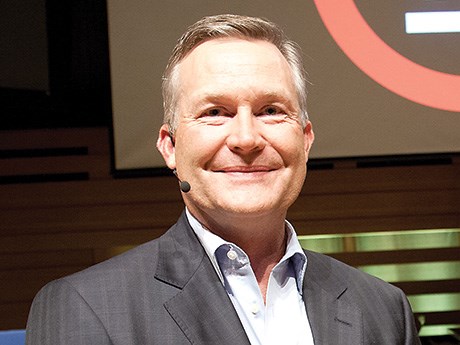Conventional notions of the mining industry as a blight on the environment, and technologically backward came crashing down at Moses Znaimer’s Ideacity conference in Toronto, June 15th.
Four speakers – George Salamis, executive chairman, Integra Gold, Todd White, COO of Goldcorp, Michelle Ash, chief innovation officer, Barrick Gold, and Cheryl Recollet, director of sustainable development of the Wahnapitae First Nation – took advantage of a unique opportunity to address a Toronto audience unaccustomed to hearing anything positive about the mining industry.
“I’m here today to challenge you about any preconceived notions you have about the mining industry,” said Salamis. “I’m here to tell you about some of the bold things we’re doing and how we’re moving from resources to resourcefulness.”
Salamis told delegates about Integra’s Gold Rush Challenge, a crowdsourcing initiative to mine 75 years worth of data from the Lamaque Mine in northwestern Quebec, and its co-sponsorship of the Disrupt Mining competition with Goldcorp in March. The Gold Rush Challenge offered a $1 million grand prize for the discovery of a new gold deposit on its property, while the Disrupt Mining event attracted 150 submissions promoting innovative technologies.
Machine learning, artificial intelligence, robotics and the use of bio-intelligent organisms for mining and remediation are among the technologies that are disrupting the mining industry, said Salamis.
Goldcorp’s Todd White highlighted the difficult decision the company made to break with tradition in designing its Borden Mine, 160 kilometres southwest of Timmins.
“The penalty for failure in the mining industry is huge,” said White. “It’s billions of dollars of shareholder value, so we tend to be very reluctant to try something different.”
Goldcorp rejected the tried and true path and committed to developing Borden as Canada’s first all-electric mine.
“There are a lot of advantages to battery-operated vehicles,” said White. “They produce less heat, there are no diesel emissions and they’re quiet.”
Equally important, going all-electric offers Goldcorp an opportunity to play a role in tackling the issue of global warming.
Borden will generate 50 per cent fewer greenhouse gas emissions than a conventional mine of the same size, said White.
Michelle Ash told the Toronto audience that the mining industry is sure to face disruption just like Kodak and Blockbuster.
Apple’s Liam, she said, which deconstructs iPhones and recycles the gold, copper, lithium and other minerals in the devices, will have an impact on global demand for mine production.
Apple, she said, uses between 500,000 and one million ounces of gold per year in all of its products, accounting for between 0.5 and 1.0 per cent of annual gold production, “so it’s a small impact at this stage, but it’s a beginning.”
At the same time, she said, digitization, automation, robotics, predictive analytics and machine learning are coming to the mining industry.
Closing out the session on mining was Cheryl Recollet of the Wahnapitae First Nation, who provided an inspiring story of an Indigenous community working in partnership with the mining industry on environmental monitoring.
“It’s not just an IBA-type relationship – you’re impacting me, now you have to pay me,” she said. “It’s a lot more about participation and active involvement,” incorporating Indigenous knowledge and science.


